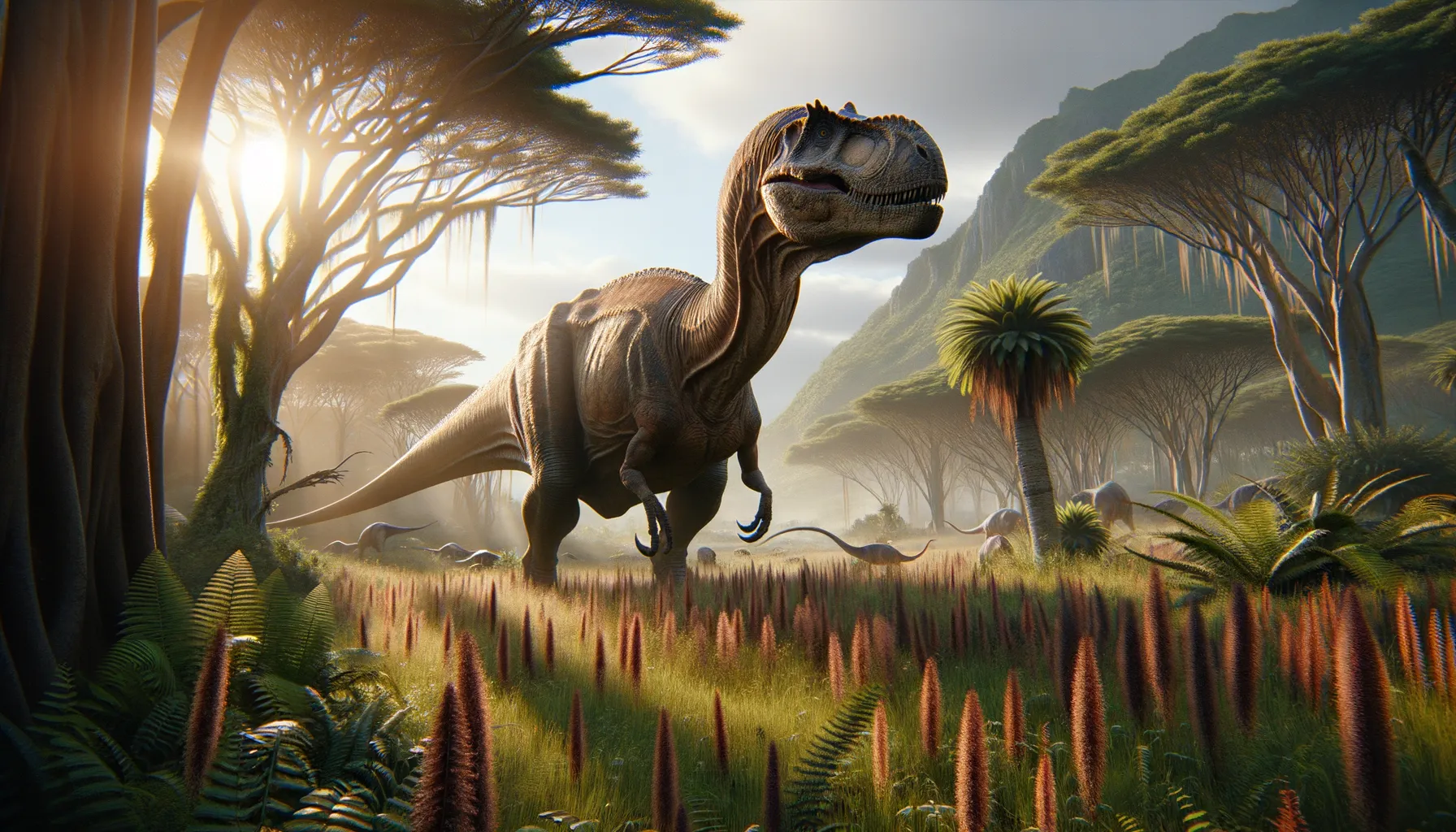
Datousaurus
A gentle giant of the Jurassic world.
Period
Jurassic
Length
Around 15 meters long.
Height
Approximately 7 meters tall.
Weight
12 to 15 metric tons.
Datousaurus was a massive herbivorous dinosaur that roamed the Earth during the Jurassic period. Known for its long neck and large body, it likely moved in herds for protection against predators. Its fossils were first discovered in China, providing valuable insights into the diverse sauropod dinosaurs of its time. This dinosaur's anatomy suggests it could have consumed a variety of vegetation, primarily through the use of its peg-like teeth and massive digestive system.
Diet
Datousaurus primarily fed on plants and vegetation. Its diet included ferns, cycads, and conifers, which were abundant during its time. The dinosaur's long neck allowed it to reach high branches and access a variety of leafy food sources.
Hunting
As a herbivore, Datousaurus did not hunt other animals. It foraged for plant material, using its broad muzzle to strip leaves from branches. This feeding behavior minimized competition with other herbivorous dinosaurs by allowing it to access food sources beyond the reach of smaller species.
Environmental challenges
During the Jurassic period, Datousaurus faced environmental challenges such as fluctuating climates and competition for food. Seasonal changes could have affected the availability of vegetation. Additionally, as large sauropods, they needed to consume enormous amounts of plant material, which required them to migrate across vast distances in search of food. Predatory threats from carnivorous dinosaurs also posed a challenge, particularly to young or injured individuals.
Speed
Relatively slow due to its size.
Lifespan
Estimated to be 70-100 years.
First discovery
Unearthed in China in the early 1980s.
Fun Facts
- Datousaurus was a massive dinosaur that lived during the Middle Jurassic period about 170 million years ago.
- Its name means 'Big-Headed Lizard', which is quite fitting due to its large skull structure.
- Datousaurus was a herbivore, meaning it fed on plants and used its long neck to reach vegetation.
- The fossils of this dinosaur were discovered in China, giving us a glimpse into the ancient ecosystems of that region.
- Datousaurus was part of the sauropod family, which includes some of the largest animals to ever walk the Earth.
- Despite its size, it's believed that Datousaurus moved quite slowly, given its massive weight and long limbs.
- Experts think Datousaurus may have traveled in herds to help protect themselves from predators.
Growth and Development
Datousaurus likely experienced rapid growth during its early years to reach its colossal size. Juveniles may have been more vulnerable to predators, thus staying in groups with adults for protection. As it matured, its massive size became an advantage, deterring potential threats. The dinosaur's development was closely tied to its ability to continuously find and consume vast quantities of vegetation.
Habitat
Datousaurus inhabited lush, forested regions with plentiful vegetation in what is now present-day China. These regions provided the necessary resources for its survival, including ample food and water sources. Its habitat would have consisted of diverse plant life, offering shelter and sustenance. The area's climate likely supported a rich ecosystem where numerous dinosaur species coexisted.
Interaction with other species
Datousaurus interacted with other herbivorous dinosaurs as they shared similar habitats. These interactions might have included mixed-species herds where they could benefit from the increased vigilance against predators. It also coexisted with carnivorous dinosaurs, requiring constant awareness to avoid becoming a target. When defending against predators, its sheer size and potential group defense strategies would have been critical.
Natural lifespan
Datousaurus had a natural lifespan similar to other large sauropods, likely living up to 100 years.
Reproduction
Like other sauropods, Datousaurus likely laid eggs in nests constructed on the ground. Reproduction involved males and females engaging in mating rituals to select partners. Once the eggs were laid, they hatched into small, vulnerable juveniles that needed to grow rapidly. Parental care might have been minimal, with young dinosaurs relying on instinct and group protection for survival.
Social behaviour
Datousaurus may have exhibited social behavior by living in herds, which provided safety in numbers. These herds could have consisted of mixed ages and potentially other sauropod species. Social structure might have included hierarchy based on size or age, influencing feeding and movement patterns. Communication among individuals could have been through vocalizations or physical cues.
Fossil locations
Fossil remains of Datousaurus have been primarily located in the Sichuan Basin of China. Excavations have revealed well-preserved skeletal structures, contributing to our understanding of its anatomy. These findings are crucial for studying the diversity and evolution of sauropods within the Jurassic period. Research conducted at these sites continues to provide insights into the ecosystem and environment in which Datousaurus thrived.
